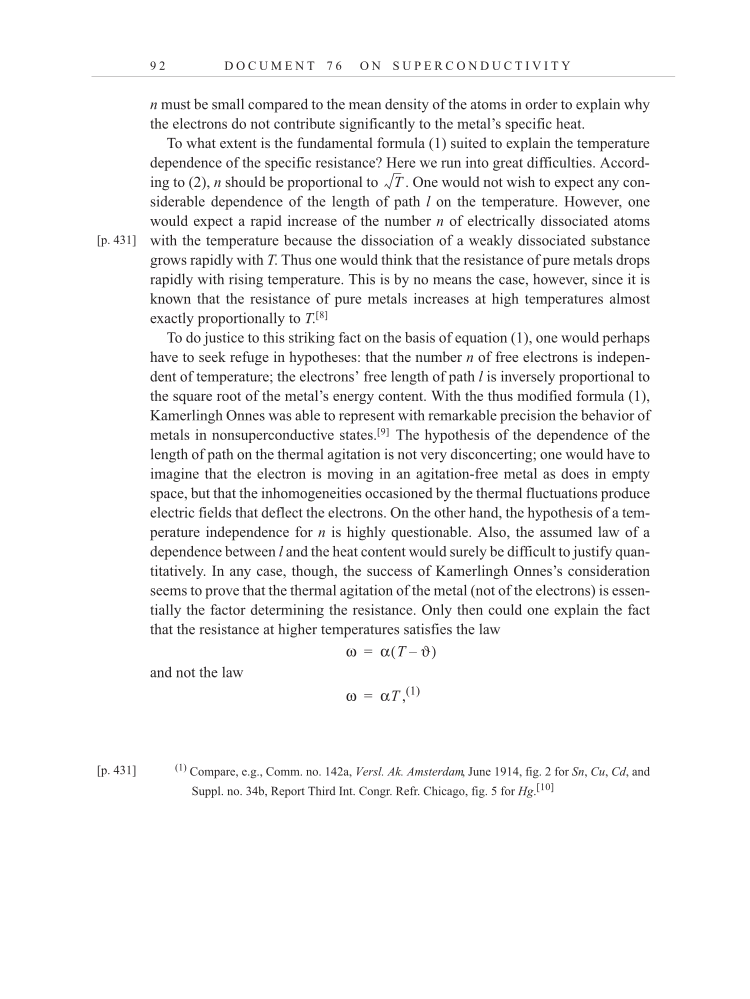9 2 D O C U M E N T 7 6 O N S U P E R C O N D U C T I V I T Y n must be small compared to the mean density of the atoms in order to explain why the electrons do not contribute significantly to the metal’s specific heat. To what extent is the fundamental formula (1) suited to explain the temperature dependence of the specific resistance? Here we run into great difficulties. Accord- ing to (2), n should be proportional to . One would not wish to expect any con- siderable dependence of the length of path l on the temperature. However, one would expect a rapid increase of the number n of electrically dissociated atoms with the temperature because the dissociation of a weakly dissociated substance grows rapidly with T. Thus one would think that the resistance of pure metals drops rapidly with rising temperature. This is by no means the case, however, since it is known that the resistance of pure metals increases at high temperatures almost exactly proportionally to T.[8] To do justice to this striking fact on the basis of equation (1), one would perhaps have to seek refuge in hypotheses: that the number n of free electrons is indepen- dent of temperature the electrons’ free length of path l is inversely proportional to the square root of the metal’s energy content. With the thus modified formula (1), Kamerlingh Onnes was able to represent with remarkable precision the behavior of metals in nonsuperconductive states.[9] The hypothesis of the dependence of the length of path on the thermal agitation is not very disconcerting one would have to imagine that the electron is moving in an agitation-free metal as does in empty space, but that the inhomogeneities occasioned by the thermal fluctuations produce electric fields that deflect the electrons. On the other hand, the hypothesis of a tem- perature independence for n is highly questionable. Also, the assumed law of a dependence between l and the heat content would surely be difficult to justify quan- titatively. In any case, though, the success of Kamerlingh Onnes’s consideration seems to prove that the thermal agitation of the metal (not of the electrons) is essen- tially the factor determining the resistance. Only then could one explain the fact that the resistance at higher temperatures satisfies the law and not the law ,(1) (1) Compare, e.g., Comm. no. 142a, Versl. Ak. Amsterdam, June 1914, fig. 2 for Sn, Cu, Cd, and Suppl. no. 34b, Report Third Int. Congr. Refr. Chicago, fig. 5 for Hg.[10] T [p. 431] ω α( T ϑ) – = ω αT = [p. 431]
